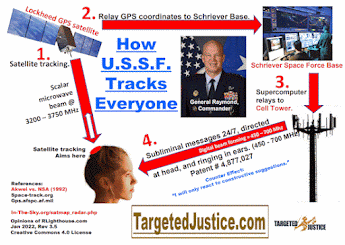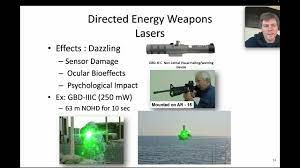Patent No. 5512823 Electromagnetic field detector for detecting electromagnetic field strength in an extremely low frequency band and a very low frequency band
Patent No. 5512823
Electromagnetic field detector for detecting electromagnetic field strength in an extremely low frequency band and a very low frequency band (Nepveu, Apr 30, 1996)
Abstract
A hand-held detector for determining whether the exposure to electromagnetic fields resulting from electric power lines, faulty wiring, and electrical and electronic appliances is within acceptable limits. The device includes a shielded pickup coil, a filter circuit having a transfer function which provides a distinct response in two frequency bands, a summing circuit which provides a voltage indicative of the detected levels of electromagnetic flux density in the two frequency bands, and a display circuit, to provide a visual indication of the detected energy level. The filtering circuit preferably includes a first, extremely low frequency (ELF) amplifier having an upper cutoff frequency of approximately 2 kHz, and a second, very low frequency (VLF) amplifier having a lower cutoff at approximately 6 kHz. The display circuit consists of a series of visual indicators, such as light emitting diodes (LEDs), which progress from green to yellow to red in color, in the manner of a traffic signal, to indicate whether the received radiation in both frequency bands is below, at, or above an acceptable level.
Notes:
Electromagnetic
field detector for detecting electromagnetic field strength in an extremely
low frequency band and a very low frequency band. Filed December 1993, granted
April 1996. Is a device for determining electromagnetic field strength within
certain frequency bands, not for determining exact frequency. Might work as
part of an overall system to detect the psychotronic attacks. If nothing else
it would help to point out things that would interfere with detection of the
psychotronic attacks. Narrowing the bands as described or adding additional
bands to the ones listed, say .001 Hz to 12 Hz for example, and a dial
to dial in the specific frequencies and lowering the flux density levels measured
to say femtoteslas or adding this as a separate option may aid in the detection
of psychotronic attacks. Use of a computer to scan the frequencies and store
the readings in memory or display and/or print out with an appropriate filtering
device to remove the fields generated by the computer and other electronic devices,
which could already be measured with the device, would also help. Use of a second
computer measuring and correlating the above with an EEG reading of the person
under attack would be of use also. The patent basically describes a smoke detector
or smaller sized device for detecting said electromagnetic field strength, which
should in my opinion be just as mandatory (voluntarily or not) in multiple family
dwellings as a smoke detector for safety concerns as also mentioned in the patent.
FIELD
OF THE INVENTION
This invention relates generally to the measurement of low frequency electromagnetic
radiation, and in particular to an easy-to-use detector which determines whether
harmful flux density levels exist in two frequency bands of interest.
BACKGROUND OF THE INVENTION
The public has increasingly been concerned about possible health hazards due
to low frequency radiation emanating from electrical and electronic devices,
as well as the associated electrical power lines and distribution equipment.
One concern has been focused on the effects of long-term exposure to magnetic
fields generated by high powered, alternating current (AC) transmission lines,
and whether or not they can cause cancer. This concern has resulted in certain
studies of the problem, such as the case-controlled study undertaken by the
Karolinska Institute, in Stockholm, Sweden, between 1960 and 1985. That study
found some correlation between childhood leukemia and adult myeliod leukemia
and magnetic flux densities exceeding the 200-300 nanotesla range especially
in individuals living within 300 meters of high voltage powerlines. See, for
example, Ahlbomn Feychting, "Magnetic Fields and Cancer in People Residing Near
Swedish High Voltage Power Lines," Karolinska Institute, IMM-Rapport, June 1992.
Another concern relates to the emissions of the electrical and electronic devices
themselves, and particularly devices which generate electromagnetic energy at
frequencies higher than the AC power lines, such as the cathode ray tubes (CRTs)
used in television sets and the visual display units (VDUs) associated with
computers. Among the symptoms thought to be related to prolonged exposure to
the radiation generated by such devices are increased risk of miscarriage among
pregnant women, and allergic reactions to the skin and eye, although conclusive
scientific proof associating such symptoms with prolonged exposure to CRTs is
lacking.
Due to this increased anxiety among the public at large, a number of governments
and other institutions have begun to establish systems for nonmandatory testing
of CRTs and other equipment.
For example, the Swedish government has established its "Alternating Electromagnetic
Field Exposure Guidelines", MPR 1990:8. The electromagnetic emission characteristics
established by these nonmandatory guidelines fall into two frequency bands of
interest. A first, extremely low frequency (ELF) band extends from approximately
five hertz to two kilohertz (kHz), and is primarily concerned with fields generated
at the frequency of electric power lines. The suggested limit for acceptable
magnetic field flux densities is 250 nanoteslas root mean square (rms) in the
ELF band.
A second, very low frequency (VLF) band, ranges from approximately two kHz to
400 kHz, and flux densities greater than 25 nanoteslas (rms) are considered
to exceed the guidelines. Electromagnetic energy in the VLF band is primarily
generated by the vertical and horizontal retrace circuits in electronic devices,
principally CRTs.
In practice, we have found that a number of appliances and electronic devices
in common use in the home as well as in the office may generate enough electromagnetic
energy to result in exposure to flux densities greater than that specified by
the Swedish government guidelines. This is especially true for devices which
are meant to be held in close proximity to the body during their use, such as
electric razors, hair dryers, curling irons and the like.
Ungrounded or otherwise faulty electrical wiring systems may cause unbalanced
return currents that also generate potentially harmful electric fields. In fact,
instances have been observed in which an improperly grounded home wiring system
generates ELF fields in excess of 250 nanoteslas in the home next door, even
when the adjacent home itself has a properly grounded electrical system.
Traditionally, ELF and VLF radiation has been measured with precision scientific
instruments such as laboratory gausmeters. These instruments are not particularly
appropriate for a non-technically trained person to assess possibly dangerous
exposure levels, however, for several reasons. First, such devices are typically
expensive, and require at least some rudimentary training in electromagnetic
field theory in order to use them properly. Secondly, a layperson typically
cannot readily determine which exposure levels are acceptable, since absolute
flux density measurements must be related in some manner to each of the frequency
bands in which the radiation is observed.
Certain characteristics of the radiation of interest further complicate such
measurements. Electromagnetic radiation in the ELF and VLF bands tends to be
highly directional, may often vary greatly in magnitude over small distances,
and may comprise magnetic fields having peak intensities are several orders
of magnitude below that of the fields generated by the earth itself. Together,
these and other considerations conspire to deprive the average individual of
the ability to determine whether or not his or her own long-term exposure to
electromagnetic radiation is an acceptable health risk.
What is needed is a user-friendly device enabling an average individual to easily
determine whether the exposure to electromagnetic radiation in a particular
situation is acceptable. The device would measure the exposure to electromagnetic
flux densities in both an ELF band, centered around the common 60 hz alternating
current (AC) power frequency, as well as the exposure to electromagnetic flux
densities in a higher frequency VLF band, associated with emissions from electrical
and electronic equipment such as VDTs, television sets, electric razors, hair
dryers and the like.
The device should not require the user to determine field strength measurements
in absolute numbers, but rather should provide a simple visual indication to
indicate whether the exposure is well below acceptable radiation threshold levels,
approaching the acceptable levels, or above the acceptable levels.
The visual indication should also automatically summarize detected variations
in each of the frequency bands of interest, thereby further simplifying use
of the device.
SUMMARY OF THE INVENTION
Briefly, the invention is a hand-held unit including a shielded pickup coil
which produces a coil voltage in response to varying electromagnetic fields,
a filter circuit connected to receive the coil voltage at its input, the filter
circuit having a transfer function which provides a distinct response in two
frequency bands, a summing circuit which provides a voltage indicative of the
detected levels of electromagnetic flux density in the two frequency bands,
and a display circuit, responsive to the output of the summing circuit, which
provides a visual indication of the detected energy level.
The filtering function is preferably provided by a pair of bandpass amplifiers.
The desired response in a first frequency band is provided by an extremely low
frequency (ELF) bandpass amplifier having a lower half-power, or 3 decibel (db),
cutoff frequency at about 12 hz, a peak response at approximately 100 hz, and
an upper cutoff frequency of approximately 2 kHz. The desired response in a
second band is provided by a very low frequency (VLF) amplifier, having a lower
cutoff at approximately 6 kHz and an upper cutoff at approximately 100 kHz.
The amplifier outputs are coupled to detector diodes to provide a pair of voltages
indicative of the received power level in the two frequency bands. The detected
voltages are then summed by a summing amplifier.
The display circuit typically consists of a series of visual indicators, such
as light emitting diodes (LEDs), which preferably progress from green to yellow
to red in color, in the manner of a traffic signal, to indicate whether the
presently received radiation is below the acceptable threshold levels, approaching
the acceptable threshold levels, or above the acceptable threshold levels.
For example, if either the ELF or VLF guidelines are exceeded, the red LED is
activated. If the measured fields are within eight decibels (db) below the threshold
level, the yellow LED is activated. Below the minus eight db level, a green
LED is activated, to indicate that the exposure is within the guidelines.
A slide-type potentiometer may be included to adjust the detection thresholds,
thereby giving some indication of the magnitude of the field strength to the
user.
There are several advantages to this invention. First, it may easily be used
by a lay person to determine whether the exposure to electromagnetic flux in
both ELF and VLF bands is acceptable. The device is thus of great utility in
detecting the presence of high electromagnetic fields resulting from exposure
to power lines, faulty home wiring, or noisy appliances and other devices.
The simple three-colored light display provides an easy to interpret presentation
of the field detection results so that the user need only watch the progression
of the colored signals to determine if the proximity to radiation is acceptable.
The unit provides a dual-band detector transfer function across the entire frequency
spectrum of interest, from 12 hz to 100 kHz, and thus no switching between bands
is necessary.
The circuits are simple to implement and can be embodied in an inexpensive device.
Because the outputs of the filter amplifiers are summed, even if the energy
present in each of the ELF and VLF bands is below the threshold, when the weighted
sum of the field strengths in both bands exceeds the threshold, the display
will indicate that the safety guidelines have been exceeded.
The three LEDs are also energized in an overlapping fashion, which has the effect
of enabling the user to interpolate the seriousness of the situation to some
extent. For example, if the field exposure is approximately at the threshold
level, both the yellow and red LEDs are enabled. Similarly, if the currently
detected level is at approximately 8 db below threshold, both the yellow and
the green LED are enabled.
----------------------------------------------------------------------------
The
terms and expressions which have been employed herein are used as terms of description
and not of limitation, and there is no intention, in the use of such terms and
expressions, of excluding any equivalents of the features shown and described
or portions thereof, and it is recognized that various modifications are possible
within the scope of the invention claimed.





Comments